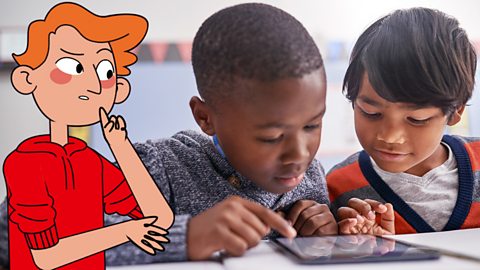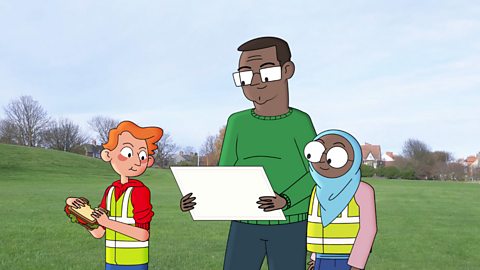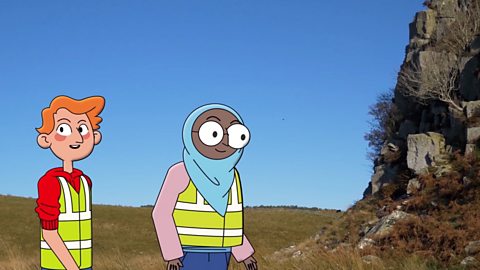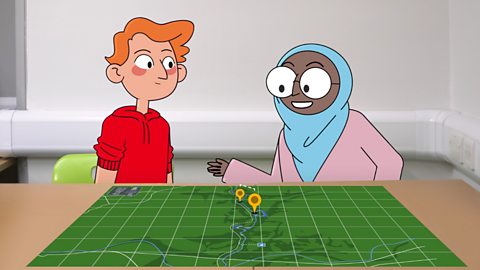Watch: Presenting your findings
Play the video to watch Ayesha and James present their findings to the class.
Ayesha: The aim of our fieldwork was to investigate the river.
James: The river flowed like… really fast!
Ayesha: And there were some things built by people and some stuff that was there from before people built things.
James: Erm… yes. We drew this map to show where things are.
Ayesha: There's also this photo of the place with like a river and some rocks.
James: And there was this duck and it was big and white and massive!
Ayesha: It was a swan, James…
James: °үіу…
Ayesha: James, let's think about it again.
James: Huh! How did you do that?
Ayesha: That's not important right now. We're not explaining things clearly.
James: You're right. We could use graphs to make things easier to understand.
Ayesha: The map needs to be drawn so the information can be seen clearly.
James: The photos should have notes so that people can see the features we found at the river.
Ayesha: And we need to say what we found out, how well we did it, and how we could make it better next time. Let's rewind and start again.During our fieldwork at the river, we found out that…
James: The river flowed at 0.14 m/s, which we found out by…
Ayesha: And finally, we see that the river is in its upper course. We can see that there is a steep valley with fingers of rock, which stick out into the valley. These are called spurs.
Teacher: Is there anything else you need to find out?
James: Well, it was raining. So there was more water in the river than usual. We could go back and take more measurements to see what it's like when it's not raining.
Teacher: Well done! That was very interesting.
Top tips for presenting your findings
Take a look at this step-by-step guide to analysing, presenting and evaluating your fieldwork:

Image caption, 1. Analyse your findings by looking at your sketches and photos.
Image caption, 2. Draw graphs to make your findings easier to understand.
Image caption, 3. Show clear maps to explain your findings.
Image caption, 4. Show your carefully-drawn sketches.
Image caption, 5. Explain what you found out during your investigation.
Image caption, 6. Think about how well your investigation went.
Image caption, 7. Think about what you could improve next time.
1 of 7
Analysing, presenting and evaluating

- Analyse your findings by:
looking at all of them
trying to understand them
- Present your findings to others by:
explaining things clearly
adding graphs to make it easier to understand
drawing clearly labelled maps
putting notes on your photos
explaining clearly what you found out
- Evaluate your findings by:
thinking about how well you carried out your investigation
thinking about what you could do better next time

Activity: Quiz – What to do after your fieldwork
Bitesize Primary games. gameBitesize Primary games
Play fun and educational primary games in science, maths, English, history, geography, art, computing and modern languages.

More on Fieldwork
Find out more by working through a topic
- count1 of 12

- count2 of 12

- count4 of 12
